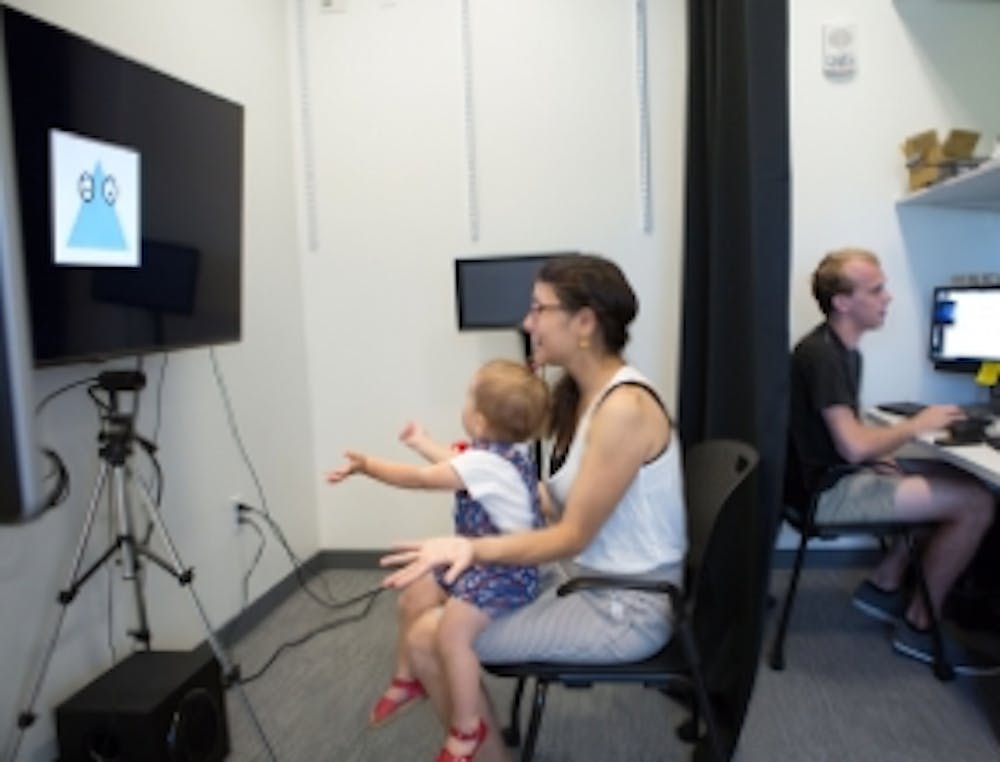The Princeton Baby Lab, a research group at the University, aims to understand how young children learn and how their learning supports their development.
“Development asks how our life history impacts our current cognitive abilities, how our brain is structured, and even our outcomes in life. That is essentially the thrust of everything at the Baby Lab,” said Lauren Emberson, a co-director of the lab.
Emberson, along with co-director Casey Lew-Williams, studies children’s early experiences and how they shape developmental trajectories.
“We have studies ranging from babies in the first couple days of their life to 8 years of age,” Emberson said.
Some babies are followed over time while others are studied in small, separate snapshots that can be pieced together. Emberson added that the characteristics of each study vary depending on the research question, though most studies involve infants from 6 to 18 months of age.
“One of the reasons why we’re doing this neonatal work is because we want to understand what capabilities babies have from the get-go, when they first get their really rich experiences after they were born,” Emberson said.
Children around 8 years old would be studied to observe changes in those capabilities.
Emberson added that research is being done on babies raised multilingually and their language environments.

“This is how most children are raised, in multilingual environments,” she noted, “and traditionally, developmental psychology has not considered that. They’ve considered one specific slice of the world which is predominantly white, predominantly monolingual, predominantly high socioeconomic status babies.”
Babies about to turn two years old are part of ongoing research about “the word explosion” and how the capabilities of babies at the time assist in language development.
Emberson explained that “the emphasis of the lab is to broaden this out into a much bigger view.”
Emberson made development her research focus after exposure to the topic in graduate school. Now, many graduate students work alongside her and Lew-Williams at the Baby Lab.

Felicia Zhang GS was initially unsure of which aspect of psychology she wanted to pursue in her graduate work.
“One day, I thought about my sister, who’s eight years younger than I am. I remembered watching her as a baby and wanting to know what she was thinking or why she behaved in certain ways. I became excited at the possibility of finally being able to answer these questions and that’s how I ended up here!” Zhang said.
Zhang has been working with eye-trackers to measure where infants look on a computer screen showing different objects and for how long. According to Zhang, the motivating question behind this research is to better connect an understanding of how babies learn and what babies use to learn.
Twenty-seven undergraduates also work with the Princeton Baby Lab, including six seniors conducting thesis research in the lab.
One senior thesis student, Isaac Treves ’18, said he began working in the lab after collaborating with Emberson during his freshman and sophomore years in the Department of Psychology. Emberson introduced him to fNIRS, or functional near infrared spectroscopy, which is an infant-friendly brain imaging method to allow researchers to study what happens in the baby’s brain as new information is being learned. Treves found fNIRS and Emberson’s expertise very exciting, and both have been integral to his senior thesis research.
“I am working towards a Ph.D. in neuroscience. Right now I'm thinking hard about which subfield I want to go into, and I definitely will apply to some developmental labs, with an emphasis on brain imaging in infants for the purposes of clinical knowledge,” Treves said.
Treves added that he is very proud of the work the Baby Lab does.
Emberson said one of her proudest moments at the lab was when she encountered a little girl at Palmer Square wearing a Princeton Baby Lab shirt because this was the first time she had seen evidence of their research reach beyond the borders of the lab. The experience reminded her of the importance of the connection the lab has with the community, since it relies on families to bring in children for research.
“It’s not just about contributing to journals and all of the academics in the world; it’s about bringing the importance and the mystery of development to our local community and the community of Princeton at large,” explained Emberson.








